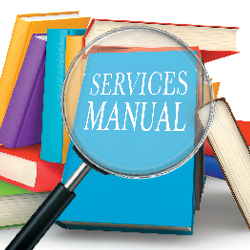|
REGISTRATION REQUIRED
exhibiting 101

ILLUSTRATIONS: patrimonio designs ltd/SHUTTERSTOCK.COM
Labor of Love
Follow these 10 tips for a painless installation-and-dismantle process at your next trade show.
Regardless of how much planning you do in the months prior to a trade show, Murphy's Law can still rear its ugly head during the installation-and-dismantle phases of your exhibit program. My personal experiences with I&D have certainly never been flawless, but it's the outright disasters and near catastrophes that are the most memorable. One time, my exhibit shipped without blueprints, which rendered the labor crew helpless as it had hundreds of pad-wrapped components but no instructions for putting them all together. In another instance, a crew showed up to install my exhibit long before the freight appeared in the booth due to significant delivery delays. And I've ordered labor through the general services contractor (GSC) for afternoon shifts that never arrived.
Based on all of these near misses, I learned to plan ahead and avoid the majority of these problems. But I've also learned that ensuring a smooth setup takes more than working with I&D labor crews alone. There are a plethora of other union-provided laborers that you might encounter, including electricians, plumbers, carpet layers, stagehands, general labor (aka decorators), carpenters, teamsters, riggers, and audiovisual technicians. With that in mind, I'd like to share my advice for a successful setup and teardown in hopes that you won't stumble into the same I&D potholes that I've stepped in over the years. 1. Choose between the official GSC's crews and an exhibitor-appointed contractor's services. One of the first lessons I learned in this business is that by hiring the services of the GSC's labor, I was more apt to get favors, such as a variance on my inbound material-handling target date or waived penalties for arriving off target from another show. The reason most often cited by exhibitors for using the services of an EAC, however, is the ongoing relationship at multiple shows regardless of any specific show's official GSC. So your choice should probably come down to which is more valuable to you and your organization: increasing the likelihood of obtaining show-specific variances or having a consistent labor crew across multiple shows. You also need to decide if you will personally supervise the setup and teardown. If you won't be on site, you can have your exhibit house provide a supervisor (who, based on union rules, probably can't be hands-on), or pay the supervisory fee to the GSC or an EAC to manage this function. 2. Familiarize yourself with the unions that have jurisdiction over I&D services. Each union has a separate jurisdiction that gives it control of certain tasks on the show floor. To help you navigate union regulations, learn as much as you can about the jurisdictions, work rules, and hours of the unions at the venues where you'll be exhibiting. Union work rules include contractual stipulations such as member start times, lunch-break durations, wash-up and ending times, safety regulations, number of workers required for specific jobs, the minimum number of hours they will be paid, and the hourly rate. Know the days and/or times that overtime and double time kick in, and understand the mark-up rates to help you budget accordingly and proactively avoid unnecessary surcharges. Check your exhibitor services manual for union information. If you don't understand what unions you'll need to work with, or what work you can perform without hiring a union laborer, ask the show's operations manager, the GSC's labor supervisor, or your EAC. Don't rely on past years' interactions with unions as a basis for current shows, as contracts change and so do specific jurisdictions and work rules. 3. Share all pertinent information with the I&D contractor when labor is ordered. Before placing an order for labor, mentally work backwards from show opening. Make a list of the installation steps that need to be completed along with estimated times so that you order sufficient labor. This list should include tasks such as measuring your booth space to ensure it's marked off correctly; receiving inbound freight; hanging overhead signs, truss, lighting, and audiovisual equipment; installing electrical, Internet/audio/video cabling; laying carpet pad, carpet, and Visqueen (plastic sheeting); assembling the exhibit; testing equipment; placing furniture; setting up product displays; hanging graphics; arranging plants; displaying collateral literature; removing Visqueen; and cleaning the exhibit (usually after the aisle carpet is laid and the show floor dust has settled). Review your plans with your labor contractor to find out which tasks require coordination to maximize straight-time hours. When placing your I&D order with your assigned labor contractor, give him or her a complete set of exhibit-installation plans; labor estimates for both setup and teardown (also called dismantle or strike); complete and confirmed order forms for all on-site ancillary services that affect setup, such as electrical, Internet, plumbing, gas, compressed air, etc.; written change orders for on-site services; an exhibit description including necessary tools and hardware; and any deadlines including talent rehearsals on stage areas, equipment installation, product-display setup, exhibit-staff orientation or training sessions, etc. In addition to providing the aforementioned materials and paperwork to your contractor, also bring the following items with you to the show: a spare set of full-size setup drawings; exhibit photos or renderings; special tools or equipment required to assemble the exhibit; keys or combinations for any locks on kiosks, counters, and/or security cages; and a list of items you've packed for use by the I&D crew, including cables, tape for carpet and pad, Visqueen, Velcro, surge protectors/power strips, cleaning supplies, stretch film, banding, paint, spare laminate, etc. Note that you can order most of these materials at the show, but it will likely cost you an arm and a leg. 4. Work closely with your crew's lead to delegate assignments. Your I&D crew will include a more senior, experienced person who is designated as your lead. The lead laborer acts as the crew's supervisor and usually receives an added incentive ($1 to $2 an hour, known as a "kicker") to perform this function. The lead will coordinate all aspects of your setup, and if you need something specific done, such as making a run to a local store for a missing item, your lead will assign a person on the crew to this task. 5. Get to know your crew. Work with your contractor and labor crew so they have the same vision you do. Every setup should start with an orientation between the exhibit manager (or rep such as someone from your exhibit house) and the labor team. This brief session should include introductions and an overview of the installation including photos, setup drawings, and the freight's location on the trade show floor. Make your schedule and expectations clear regarding the parts of setup that need to be completed by specific times. For example, "Our engineers will be here at 2 p.m. today to set up their equipment on the kiosks, so we need those assembled first," or "The audiovisual crew will be here first thing tomorrow morning, so by the end of today, we need to have the theater stage built." 6. Leave jurisdiction decisions up to your crew's lead. Never ask union labor to perform tasks out of their jurisdiction. Your experienced I&D crew knows what it can and can't do, based on the local union contracts. However, if you have a problem with labor on jurisdictional issues, locate the show's floor manager – you'll know this person by his or her bicycle or cart bearing a sign that reads "Floor Manager." If you can't find the floor manager, ask the show operations manager or EAC/GSC service/desk personnel where to find him or her. 7. Create a positive environment. Everyone likes to hear that they are doing a good job. Give credit where credit is due when a worker goes above and beyond the call of duty for you. This does not mean you should offer or give cash tips to your crew, as accepting these in some jurisdictions can get workers fired. And the GSC's section of the exhibitor kit prohibits tipping exhibit labor. But complimenting them personally and telling the supervisor at the labor desk what a good job they did will definitely pay off in the long run, especially if you have requested the same laborers to come back for teardown. Don't hesitate to commend them on the contractor's on-site and post-show evaluation form as well. On the flip side, if you have bad service, don't confront the offending laborer. Let your lead return the laborer to the contractor's assignment desk and have him or her signed out or replaced. Some of the problems I've encountered include an unproductive worker disappearing when he went to fetch a ladder, a worker that didn't possess the skills necessary to complete a task, and even a guy that didn't want to take direction. 8. Ensure repeat business. If you can get the same labor crew for teardown that you had for setup, your dismantle will be much more efficient. That's because the crew already knows how your exhibit is put together and how it was shipped into the show. That knowledge will expedite the teardown process and hopefully reduce your total teardown hours. When signing out your crew at the labor desk following setup, confirm with the labor supervisor the date and time of your dismantle. Then find out which members of the installation crew will be available again for your teardown, and identify the workers you want. Note that some unions assign work on a rotational basis, so you might not always be able to get the same laborers back. 9. Treat dismantle as its own process. Prepare your crew for the teardown process in the same manner that you explained setup requirements. Dismantle considerations include: addressing security concerns (the majority of loss and theft occurs during teardown); confirming return shipping arrangements; removing and repacking equipment and product displays; scheduling the labor call for dismantle; identifying necessary repairs required before the exhibit's next use; disassembling and packing the exhibit; taking off empty labels on crates/boxes and relabeling exhibit components for the return shipment; removing and packing carpet and pad; retrieving exhibitor-owned under-carpet cabling; dropping any hanging signs for dismantling and packing; verifying the piece count for the uniform material handling agreement and bill of lading; and loading all materials on the truck by the specified time to avoid forced freight. 10. Remember the Golden Rule. My final words of advice, which supersede everything else, is to do unto others as you would have them do unto you. Keep that gem in mind throughout the I&D process, and you are more likely to walk away with a seamless setup and teardown – and maybe a few new friends to boot. E  installation steps
installation stepsBefore placing an order for labor, mentally work backwards from show opening. Make a list of all of your installation steps that need to be completed along with the estimated time required to complete each task so you order sufficient labor. (See the example below.) Note that more than one task can be accomplished at the same time, so you may have crossover labor hours.
 Candy Adams
Candy AdamsCTSM, CEM, CMP, CMM "The Booth Mom," is an independent exhibit project manager, trainer, speaker, consultant, and an Exhibitor Conference faculty member. CandyAdams@BoothMom.com
|
|
|
||||||||||||||||||||||||||||
|
|
||||||||||||||||||||||||||||
|
TOPICS Measurement & Budgeting Planning & Execution Marketing & Promotion Events & Venues Personal & Career Exhibits & Experiences International Exhibiting Resources for Rookies Research & Resources |
MAGAZINE Subscribe Today! Renew Subscription Update Address Digital Downloads Newsletters Advertise |
FIND IT Exhibit Producers Products & Services All Companies Get Listed |
EXHIBITORLIVE Sessions Exhibit Hall Exhibit at the Show Registration |
ETRAK Sessions Certification F.A.Q. Registration |
EDUCATION WEEK Overview Sessions Hotel Registration |
CERTIFICATION The Program Steps to Certification Faculty and Staff Enroll in CTSM Submit Quiz Answers My CTSM |
AWARDS Exhibit Design Awards Portable/Modular Awards Corporate Event Awards Centers of Excellence |
NEWS Associations/Press Awards Company News International New Products People Shows & Events Venues & Destinations EXHIBITOR News |
||||||||||||||||||||
|
||||||||||||||||||||||||||||






